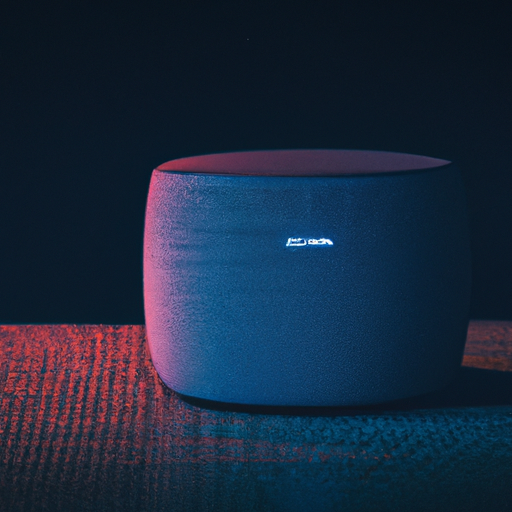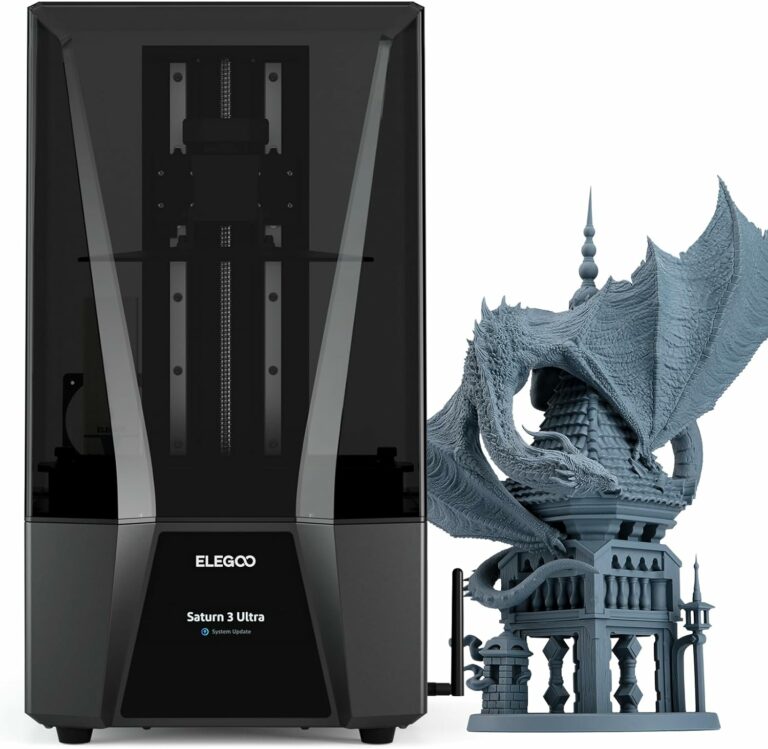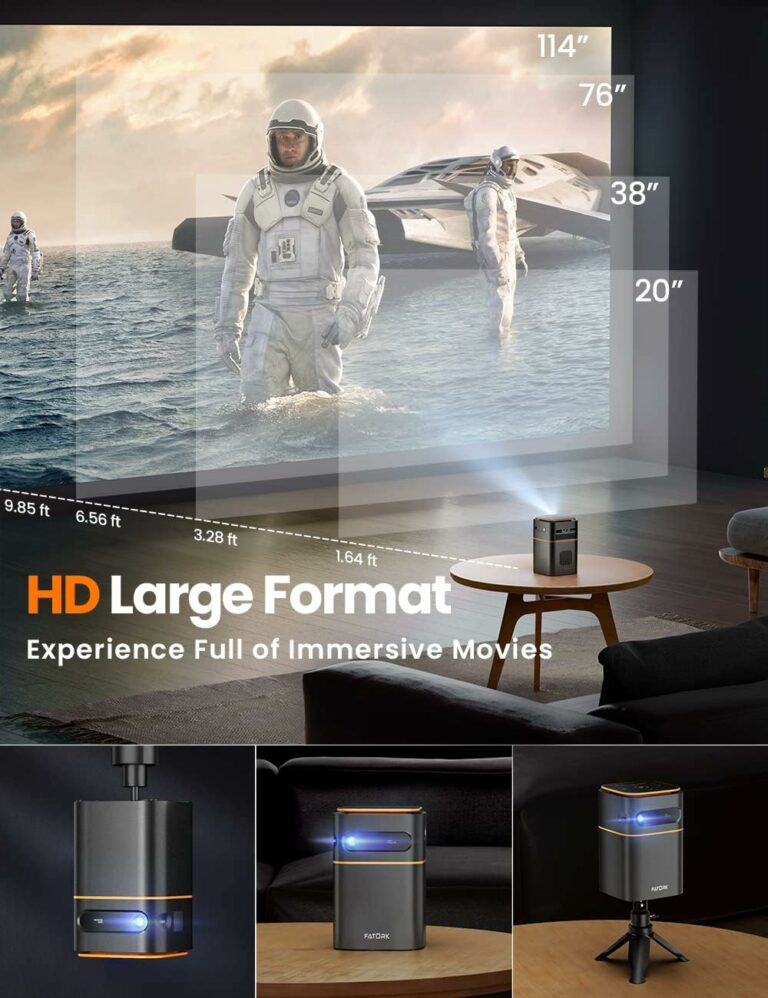Are you ready to embark on a fascinating journey into the realm of smart speakers? In this article, we will explore the captivating world of Alexa and Google Home, two of the most popular voice-activated companions that have transformed the way we interact with technology in our daily lives. From their intelligent capabilities to their ever-expanding range of functions, we will delve into the features that make these smart speakers an indispensable part of our homes. So, sit back, relax, and get ready to immerse yourself in the enticing world of smart speakers as we compare and contrast the prowess of Alexa and Google Home.
Voice-controlled Smart Speakers
Welcome to a deep dive into the world of voice-controlled smart speakers! In this article, we will explore the popular smart speakers – Alexa and Google Home – and delve into their key features, design, sound quality, supported platforms and devices, smart home integration, music and media services, third-party skills and actions, language support, as well as their respective prices and availability.
So, let’s get started and discover what makes these voice-controlled smart speakers so incredibly popular!
What are smart speakers?
Smart speakers are innovative devices that utilize voice recognition and natural language processing technologies to interact with you and assist you with various tasks. They are designed to respond to your voice commands and provide you with hands-free convenience in controlling your smart home devices, answering questions, playing music, managing calendars, and much more. Essentially, they are virtual assistants in the form of sleek and compact speaker systems.
How do smart speakers work?
Smart speakers employ advanced artificial intelligence algorithms to process and understand your voice commands. They use built-in microphones to listen to your voice and then transmit the audio data to the cloud, where it is analyzed and interpreted. Once the command is understood, the smart speaker can perform the requested action, whether it is answering a question, playing a specific song, or activating a smart home device. The responses are delivered through the built-in speakers, allowing you to hear the virtual assistant’s voice.
Why are smart speakers popular?
Smart speakers have gained immense popularity due to the convenience and simplicity they bring to our lives. By using voice commands, you can control various aspects of your smart home, without needing to reach for your phone or physical remotes. They enable a seamless integration of technology into our daily routines, making mundane tasks easier and more enjoyable. Moreover, smart speakers continuously improve through regular software updates, adding new features and enhancing their capabilities over time. With their ability to adapt and learn, these devices have become indispensable assistants for many households.
Now, let’s take a closer look at the key features and capabilities of Alexa and Google Home.
Key Features and Capabilities
Alexa’s features and capabilities
Alexa, developed by Amazon, boasts an extensive array of features and capabilities. As an AI assistant, she can control compatible smart devices, play music from various streaming services, answer questions, make hands-free calls, set timers and alarms, provide weather updates, read audiobooks, and keep you entertained with jokes and games. Alexa also supports various third-party skills, allowing her to order food, book a ride, manage your finances, and more. The skills can be easily enabled through the Alexa app, enabling you to customize your experience and tailor Alexa to your specific needs.
Google Home’s features and capabilities
Google Home, powered by the Google Assistant, offers a similarly impressive set of features and capabilities. You can use Google Home to control compatible smart devices, get real-time weather forecasts, set reminders, create shopping lists, play music from popular streaming services, and receive personalized news updates. With Google’s powerful search engine integration, you can ask complex questions and get detailed answers. Google Home also supports a wide range of third-party actions, providing you with access to services like food delivery, transportation, and home automation. These actions can be easily added and managed through the Google Home app, allowing you to expand the functionality of your smart speaker.
Next, let’s discuss the design and aesthetics of these smart speakers.
Design and Aesthetics
Alexa’s design and aesthetics
Amazon has crafted the Alexa devices with a combination of style and subtlety. The Amazon Echo series, which includes models like the Echo Dot, Echo, Echo Plus, and Echo Studio, feature a cylindrical shape with a fabric or metal speaker grille. The soft angles and sleek design make these speakers visually appealing and blend seamlessly with any home decor. The Echo Dot, the smallest and most affordable option, is compact and unobtrusive, making it easy to place in any room.
Google Home’s design and aesthetics
Google Home devices, on the other hand, have a minimalist and modern design. With options like the Google Home Mini, Google Nest Audio, and Google Home Max, Google has created speakers that feature clean lines and a combination of fabric and plastic materials. The Google Home Mini, similar in size to the Echo Dot, has a compact and unassuming appearance. The Google Nest Audio, an updated successor to the Google Home, brings a more refined look with a rectangular shape and fabric covering. The Google Home Max, as the name implies, is the largest and most premium option, suitable for those who prioritize both aesthetics and powerful audio.
Now, let’s put our ears to the test and evaluate the sound quality and performance of Alexa and Google Home.
Sound Quality and Performance
Alexa’s sound quality and performance
The Amazon Echo series offers a range of sound quality depending on the specific model. The Echo Dot, although small in size, surprises with decent audio output for its compact build. The mid-range Echo and Echo Plus provide more pronounced sound quality with enhanced bass and a fuller audio experience. If immersive audio is your priority, the Echo Studio offers Dolby Atmos support, delivering a three-dimensional soundstage and deep bass response. In terms of performance, Alexa has been praised for her quick response times, accurate voice recognition, and reliable connectivity, ensuring a smooth user experience.
Google Home’s sound quality and performance
Google Home devices also deliver satisfying audio quality. The Google Home Mini, considering its small size, produces clear sound with adequate volume. The Google Nest Audio, with its updated speaker setup, promises improved frequency response, strong bass, and enhanced clarity. If you desire premium audio performance, the Google Home Max boasts powerful speakers and advanced sound technologies for an immersive listening experience. Google Home’s performance is equally commendable, with accurate voice recognition, minimal lag, and seamless integration with other Google services.
With an understanding of the sound quality and performance, let’s move on to explore the supported platforms and devices for both Alexa and Google Home.
Supported Platforms and Devices
Alexa’s supported platforms and devices
Alexa is compatible with a wide variety of platforms and devices. Amazon offers their own Echo devices, but Alexa is also available on select third-party devices such as speakers, soundbars, headphones, and even some smart TVs. Additionally, Alexa is accessible through the Alexa app on both iOS and Android devices, expanding its compatibility further. Amazon’s commitment to Alexa’s widespread availability ensures that you can seamlessly integrate the virtual assistant into your existing ecosystem of devices.
Google Home’s supported platforms and devices
Google Home embraces a similar approach to compatibility. While Google has their own line of Google Home devices, they have also collaborated with other manufacturers to integrate the Google Assistant into their products. This means that you can find smart speakers, soundbars, headphones, smart displays, and smart TVs that feature Google Home capabilities. Moreover, Google Home can be accessed via both the Google Home app and Google Assistant app on iOS and Android devices, allowing you to connect and control your devices effortlessly.
Now, let’s explore how these smart speakers can integrate with your smart home devices.
Smart Home Integration
Alexa’s smart home integration
One of Alexa’s greatest strengths is her extensive smart home integration capabilities. With the ability to control a wide range of compatible devices from leading brands, such as lights, thermostats, door locks, security cameras, and more, Alexa serves as a central hub for managing your smart home ecosystem. Additionally, Amazon continues to expand its partnerships, ensuring that Alexa supports the latest devices and technologies. This makes it effortless for you to create personalized routines and control your smart home just by using your voice.
Google Home’s smart home integration
Google Home, similarly, excels in smart home integration. With compatibility with numerous devices, including lights, thermostats, security systems, and entertainment systems, Google Home allows you to create a seamless and interconnected smart home experience. Google’s commitment to an open ecosystem enables you to connect and control a wide range of devices from different manufacturers, making it easy to customize and expand your smart home setup. By utilizing voice commands, you can easily adjust settings, activate scenes, and enjoy the convenience of a truly smart home.
As music and media services play a prominent role in our daily lives, let’s explore the music and media services offered by Alexa and Google Home.
Music and Media Services
Alexa’s music and media services
Thanks to its close relationship with Amazon, Alexa offers a deep integration with Amazon Music, allowing you to access an extensive library of songs, albums, and playlists. Additionally, Alexa supports popular streaming services like Spotify, Apple Music, and Pandora, ensuring you have a variety of options when it comes to choosing your preferred music streaming platform. With multi-room audio capabilities, you can synchronize music across multiple Alexa devices, creating a cohesive listening experience throughout your home.
Google Home’s music and media services
Google Home provides a similar range of music and media services. Google Play Music, YouTube Music, and Spotify are seamlessly integrated, enabling you to easily access millions of songs through voice commands. Additionally, Google Home supports other major streaming services like Pandora and Deezer, ensuring that you can enjoy your favorite tunes from various platforms. Google’s Chromecast integration also allows you to cast music, videos, and podcasts to your TV or speakers, expanding your entertainment possibilities.
Now, let’s explore the available third-party skills and actions for both Alexa and Google Home.
Third-Party Skills and Actions
Alexa’s third-party skills
Alexa’s extensive library of third-party skills is one of its standout features. Skill developers have created a wide range of add-ons, enabling Alexa to perform tasks beyond her built-in capabilities. With skills, you can order food, book a ride, check your bank account balance, meditate, practice yoga, and much more – all with a simple voice command. The Alexa Skills Store offers a plethora of options, allowing you to personalize Alexa’s capabilities to suit your needs and create a unique smart home experience.
Google Home’s third-party actions
Google Home’s third-party actions provide a similar level of functionality. Actions are third-party developed features that allow Google Home to perform additional tasks. You can find actions for food delivery, transportation, social media updates, news updates, and even games. The Actions on Google platform provides a streamlined process for developers to create and publish their actions, ensuring that you have access to an ever-expanding selection of capabilities. With the ability to add and manage actions, you can customize Google Home to meet your specific requirements and preferences.
Now, let’s discuss the language support provided by Alexa and Google Home.
Language Support
Alexa’s language support
Alexa supports multiple languages, including English, Spanish, French, German, Italian, and Japanese, among others. This broad language support enables users around the world to interact with Alexa in their preferred language. Amazon continues to expand Alexa’s language capabilities, ensuring that more users can access the benefits of this versatile virtual assistant.
Google Home’s language support
Google Home, being a product of Google’s extensive language services, offers even broader language support. It allows interaction in languages such as English, Spanish, French, German, Italian, Dutch, Japanese, Korean, Portuguese, Russian, and many more. Google’s advanced language processing capabilities provide accurate and natural interactions in various languages, making Google Home a truly global voice-controlled smart speaker.
Finally, let’s explore the price and availability of these smart speakers.
Price and Availability
Alexa’s price and availability
Alexa devices are widely available globally. The pricing varies depending on the specific model and region. The Echo Dot, the most affordable option, offers an entry point for those looking to dip their toes into the world of smart speakers. The mid-range Echo and Echo Plus offer enhanced features and audio quality at a slightly higher price point. The high-end Echo Studio caters to users seeking top-of-the-line sound quality. Additionally, Amazon often offers discounts and bundle deals, making the Alexa devices accessible to a wide range of budgets.
Google Home’s price and availability
Similarly, Google Home devices are also widely available worldwide. The pricing depends on the specific model and region. The Google Home Mini, the most budget-friendly option, provides an affordable entry into the Google Home ecosystem. The Google Nest Audio offers a mid-range option with improved audio quality for music enthusiasts. The Google Home Max, with its premium audio capabilities, comes at a higher price point. Like Amazon, Google frequently offers promotions and discounts, making their smart speakers accessible to a broad range of consumers.
In conclusion, both Alexa and Google Home offer exceptional voice-controlled smart speakers with their own unique strengths and capabilities. The choice between them ultimately comes down to personal preferences, ecosystem compatibility, and the specific features that align with your needs. Whether you opt for Alexa’s extensive third-party skills and tight integration with Amazon, or Google Home’s extensive ecosystem compatibility and powerful search integration, you can be assured of a convenient and immersive smart home experience. So, choose the voice-controlled smart speaker that resonates with you and embark on a journey into the exciting world of smart home automation and virtual assistants.



